The Best Techniques for Blending with Graphite Drawing Pencils: Mastering the Art of Smooth Transitions
The Best Techniques for Blending with Graphite Drawing Pencils
Table of Contents
1. Introduction to Graphite Blending Techniques
2. Understanding Graphite Pencils and Their Grades
3. Essential Tools for Blending Graphite
4. The Importance of Paper Selection in Blending
5. Techniques for Blending Graphite Pencils
5.1 The Smudging Technique
5.2 The Layering Technique
5.3 The Using a Blending Tool Te
The Best Techniques for Blending with Graphite Drawing Pencils
Table of Contents
1. Introduction to Graphite Blending Techniques
2. Understanding Graphite Pencils and Their Grades
3. Essential Tools for Blending Graphite
4. The Importance of Paper Selection in Blending
5. Techniques for Blending Graphite Pencils
5.1 The Smudging Technique
5.2 The Layering Technique
5.3 The Using a Blending Tool Technique
5.4 The Rubbing Technique
6. Creating Textures with Graphite Blending
7. Common Mistakes to Avoid When Blending Graphite
8. FAQs about Graphite Blending Techniques
9. Conclusion
1. Introduction to Graphite Blending Techniques
Blending with graphite drawing pencils is an essential skill for artists seeking to create smooth transitions and realistic shading in their work. Whether you are a beginner or a seasoned professional, understanding how to blend effectively can elevate your drawings to new heights. In this article, we will explore the various techniques for blending graphite, the tools you need, and tips for achieving the best results.
2. Understanding Graphite Pencils and Their Grades
Graphite pencils come in a range of grades, from H (hard) to B (soft), with F (fine point) being somewhere in between. The grade of a pencil significantly affects the blending process.
- **Hard Pencils (H)**: These produce fine lines with little graphite applied to the paper. They are ideal for detailed work but do not blend well.
- **Soft Pencils (B)**: These contain more graphite, allowing for smoother shading and easier blending. They are perfect for creating rich, dark areas.
- **Medium Pencils (HB)**: These serve as a versatile choice for both fine lines and shading, making them suitable for most blending techniques.
Understanding the characteristics of different grades will help you choose the right pencil for your specific blending needs.
3. Essential Tools for Blending Graphite
To achieve professional results when blending with graphite pencils, consider investing in the following essential tools:
- **Blending Stumps**: These cylindrical tools allow for precise blending and smoothing of graphite.
- **Tortillons**: Similar to blending stumps but tapered at one end, tortillons are excellent for detailed areas and smaller sections.
- **Soft Cloth or Tissue**: A clean, soft cloth can effectively smudge graphite without creating harsh lines.
- **Cotton Swabs**: These can be useful for blending in tight spaces and achieving subtle gradients.
Having these tools at your disposal will enhance your blending capabilities and provide a variety of textures in your artwork.
4. The Importance of Paper Selection in Blending
The type of paper you use plays a significant role in your ability to blend graphite effectively. Here’s what to consider:
- **Texture**: Smooth paper is ideal for detailed work and fine blending, while textured paper can add depth and character to your shading.
- **Weight**: Heavier paper (around 200 gsm) can withstand multiple layers of graphite and blending without warping or tearing.
- **Color**: White paper offers the most accurate representation of graphite, while toned paper can create unique effects and enhance contrast.
Choosing the right paper will not only improve your blending techniques but also impact the overall quality of your artwork.
5. Techniques for Blending Graphite Pencils
Mastering various blending techniques is crucial for achieving stunning results in your artwork. Here are some of the most effective methods:
5.1 The Smudging Technique
This technique involves using your finger or a blending tool to smear the graphite on the paper. Start with a light application of graphite, and then use your finger to gently rub the area, creating a soft gradient. Be careful not to over-smudge, as this can lead to a muddy appearance.
5.2 The Layering Technique
Layering involves applying multiple layers of graphite, gradually building up the darkness. Start with a light pencil (H or HB) for the base layer, and then apply a softer pencil (B) for shading. After applying each layer, blend lightly with a blending stump or cloth to create a smooth transition between tones.
5.3 The Using a Blending Tool Technique
Using a blending stump or tortillon can produce clean and precise results. After applying graphite, use the blending tool to gently rub the area in circular motions. This technique allows for more control and creates a polished look.
5.4 The Rubbing Technique
The rubbing technique utilizes a soft medium, such as a cloth or tissue, to blend graphite. Place the cloth over the area you wish to blend and apply light pressure while moving in circular motions. This method is particularly effective for larger areas and soft transitions.
6. Creating Textures with Graphite Blending
Creating textures in your artwork can add depth and realism. Here are a few techniques to achieve various textures using graphite blending:
- **Feathering**: Lightly apply graphite and blend to create soft, feather-like textures. This technique is ideal for representing fur or hair.
- **Cross-Hatching**: Layer lines in different directions to build texture, then blend lightly to soften the appearance.
- **Stipple Technique**: Create small dots with your pencil and blend to achieve a textured gradient effect.
Experimenting with these techniques will allow you to develop a personal style and add unique elements to your artwork.
7. Common Mistakes to Avoid When Blending Graphite
To achieve the best results, be mindful of these common mistakes:
- **Over-blending**: Too much blending can result in a muddy appearance, losing the sharpness of your lines and details.
- **Using Dirty Tools**: Ensure your blending tools are clean to avoid transferring unwanted graphite residue to your work.
- **Neglecting Pencil Grades**: Using the wrong pencil grade for your desired outcome can hinder your blending efforts. Experiment with different grades to find the best combination for your style.
By avoiding these pitfalls, you can enhance your blending skills and produce more professional artwork.
8. FAQs about Graphite Blending Techniques
1. What is the best pencil for blending graphite?
The best pencil for blending is typically a softer pencil (B), as it contains more graphite and allows for smoother shading.
2. Can I blend graphite with my fingers?
Yes, using your fingers is a common method for blending graphite, but ensure your hands are clean to avoid unwanted smudging.
3. How do I choose the right paper for blending?
Opt for heavier, smooth paper to prevent warping and promote better blending results.
4. Are blending stumps necessary for blending graphite?
While not strictly necessary, blending stumps offer precision and control, making them a valuable tool for artists.
5. How can I create realistic textures with graphite?
Experiment with layering, feathering, and cross-hatching techniques to create a variety of textures in your artwork.
9. Conclusion
Blending with graphite drawing pencils is a versatile and essential skill for any artist. By understanding the types of pencils, the importance of paper selection, and mastering various blending techniques, you can create stunning artwork with smooth transitions and rich textures. Remember to avoid common mistakes, practice consistently, and most importantly, enjoy the process of creating. With patience and dedication, you’ll be well on your way to mastering the art of blending with graphite.
Previous:
Contact Us
Office: 1403, Block B, Baolong Center Office Building, Jiaozhou City, Qingdao, Shandong Province, China
Factory: Jln.Raya Sudamanik, 118 Jagabaya Village, Panjiang-Bogor County, Indonesia 16360.
WhatsApp: +86 166 7853 5913
Email:ouyajiahua@gmail.com



















